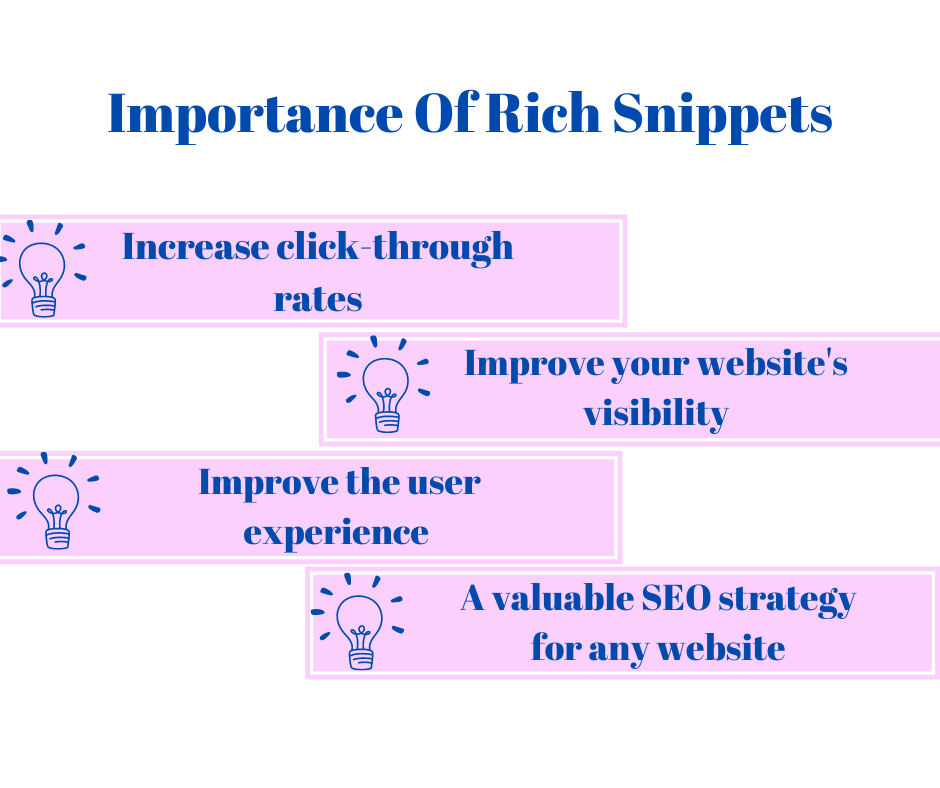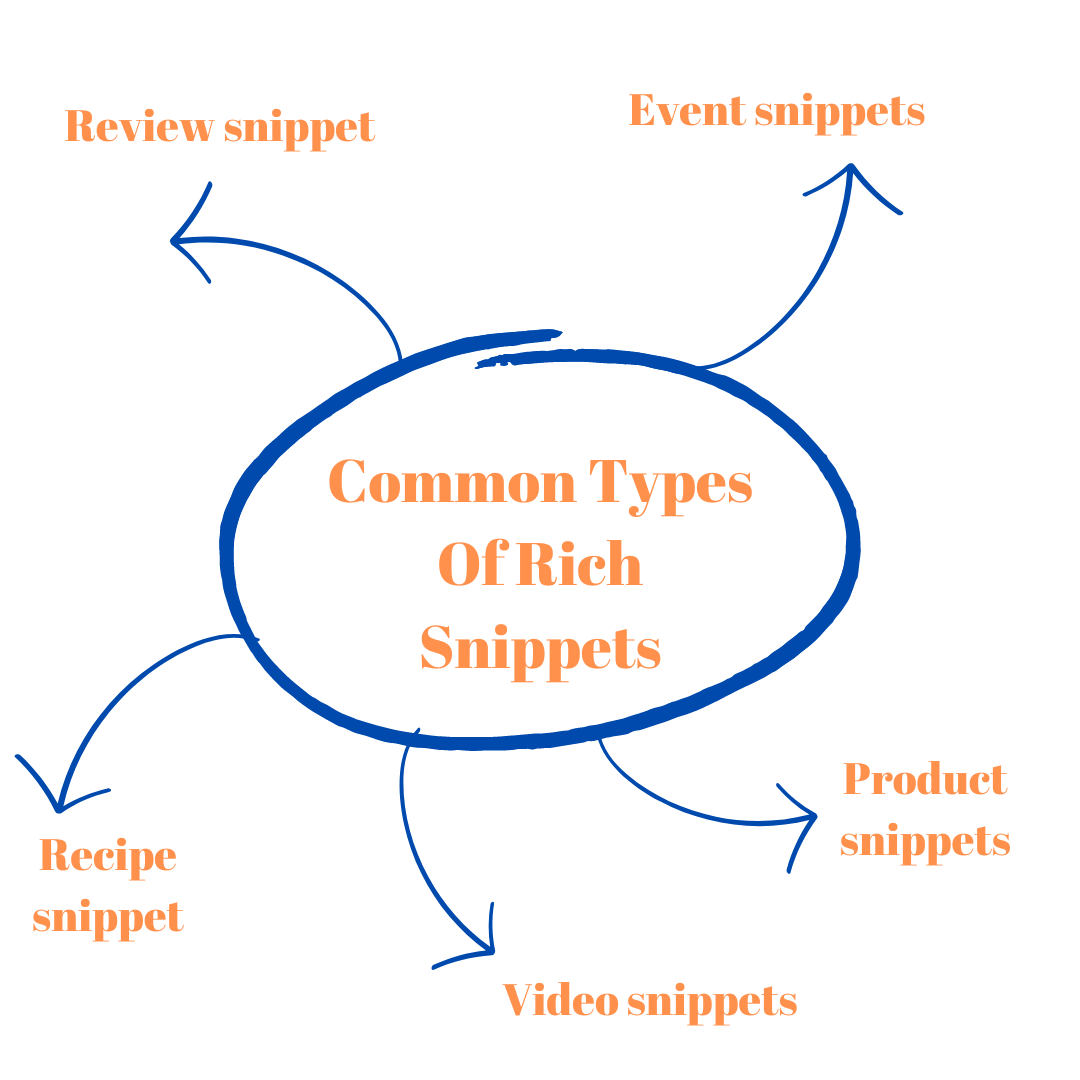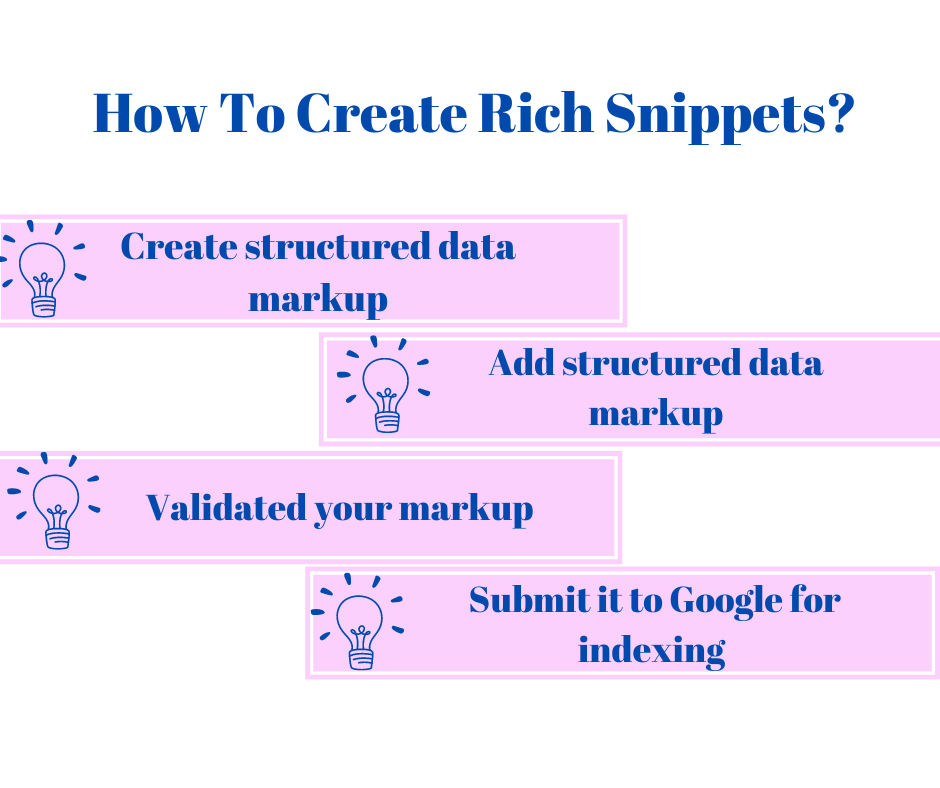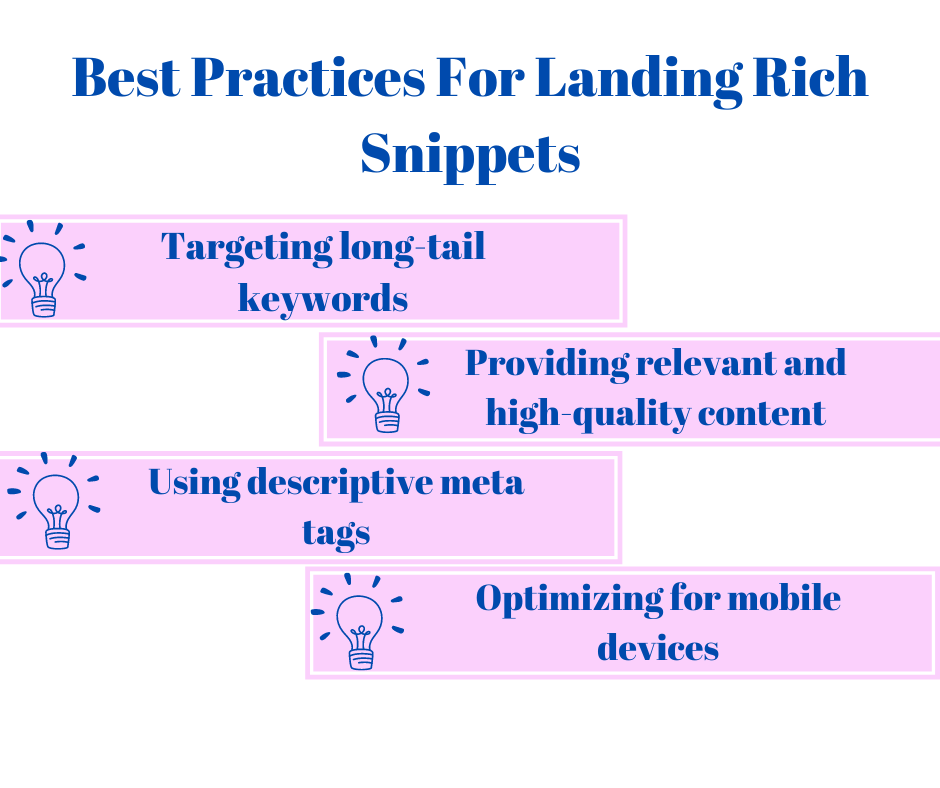Rich snippets are a type of structured data that provide additional information about a website’s content in search engine results pages. They are designed to be more visually appealing and informative than standard search results and can include images, ratings, prices, and other relevant information.

Page Contents:
What are Rich Snippets?
Rich snippets are a type of structured data that provide additional information to search engines about the content on a web page. Rich snippets can include images, ratings, prices, and other details that make the result more visually appealing and informative to users.
Having rich snippets in your website’s search results can increase click-through rates and improve your website’s visibility in search engines.

This is because they provide users with a quick preview of what they can expect to find on your website, which can help them make a more informed decision about whether or not to click through to your site.
Additionally, rich snippets can improve the user experience by providing more relevant and useful information upfront. This can help reduce bounce rates and increase engagement with your website.
Implementing rich snippets can be a valuable SEO strategy for any website looking to improve its search engine visibility and user engagement
Common Types Of Rich Snippets
Several common types of rich snippets are used to enhance search results and provide users with more useful information. One type of rich snippet is the review snippet, which displays ratings and reviews for products, services, or businesses.
This type of snippet can help users make more informed purchasing decisions and can also help businesses build trust with potential customers.
Another type of rich snippet is the recipe snippet, which displays information such as cooking time, ingredients, and reviews for recipes. This type of snippet is particularly useful for food bloggers and recipe websites, as it can help their content stand out in search results and attract more traffic.

Event snippets are another type of rich snippet that displays information about upcoming events, including date, time, and location. This type of snippet is commonly used by event organizers and can help users easily find and attend events that interest them.
Video snippets display information about videos, including length and thumbnail images. This type of snippet can help users find relevant video content and can also help video creators increase their visibility in search results.
Finally, product snippets display information such as price, availability, and reviews for products. This type of snippet is commonly used by online retailers and can help users quickly find and compare products.
By implementing rich snippets on your website, you can improve your SEO and provide users with more useful information in search results. This can lead to higher click-through rates and increased traffic to your site, which can ultimately help you achieve your business goals.
How To Create Rich Snippets?
If you’re looking to enhance your website’s search engine results page (SERP) appearance and provide more context to your users, creating rich snippets is a great way to achieve that.
To create these rich snippets, you need to use structured data markup, which is a way of organizing your website’s content in a standard format that search engines can understand. Select the rich snippet type before you start creating structured data.
One common structured data markup vocabulary is Schema.org, which provides a wide range of schemas for different types of content, such as products, recipes, events, and more.

By adding Schema.org markup to your website’s HTML code, you can tell search engines what your content is about and how it should be displayed in the search results.
To ensure that your structured data markup is valid and error-free, you can use Google’s Structured Data Testing Tool. This tool allows you to check your markup for any syntax errors, missing properties, or other issues that could prevent your rich snippets from appearing in the search results.
Once you’ve validated your markup, you can submit it to Google for indexing, which can help your website rank higher and attract more clicks from users who are searching for relevant information.
Best Practices For Landing Rich Snippets
If you want to improve your website’s visibility on search engines, landing rich snippets is a great way to do it. Rich snippets are the extra details that appear below your website’s title and URL on search engine results pages (SERPs).
They can include things like star ratings, images, and additional information, making your website stand out. To land rich snippets, you need to follow some best practices:
1. Targeting long-tail keywords
Long-tail keywords are specific phrases that people search for, rather than just single words. By targeting these keywords, you can make sure that your content is relevant to what people are looking for.
2. Providing relevant and high-quality content
To land rich snippets, your content needs to be relevant and informative. This means creating content that answers people’s questions, solves their problems, or provides valuable information.

3. Using descriptive meta tags
Meta tags are snippets of code that provide information about your website to search engines. By using descriptive meta tags, you can give search engines a better understanding of what your content is about, which can help you land rich snippets.
4. Optimizing for mobile devices
More and more people are using their mobile devices to search the internet, so it’s important to make sure that your website is optimized for mobile devices. This means creating a responsive design that looks good on any screen size, as well as optimizing your content for mobile users.